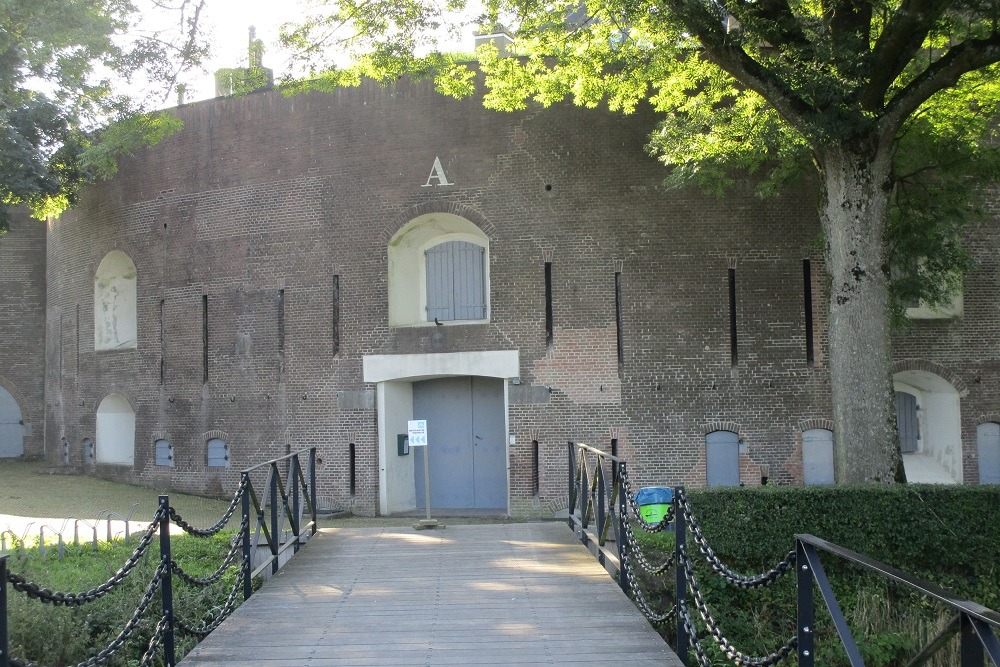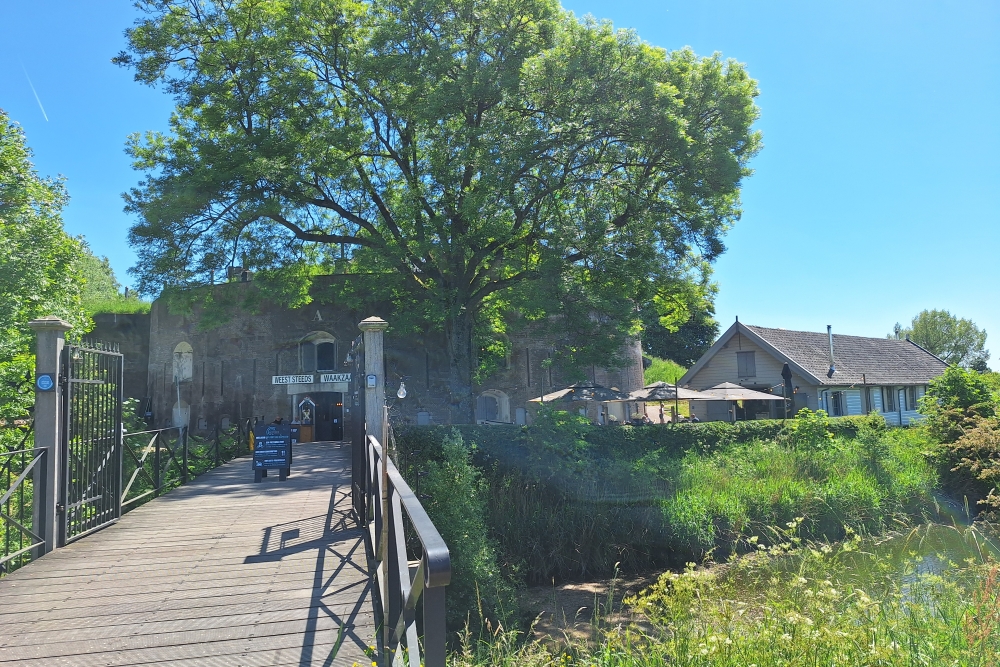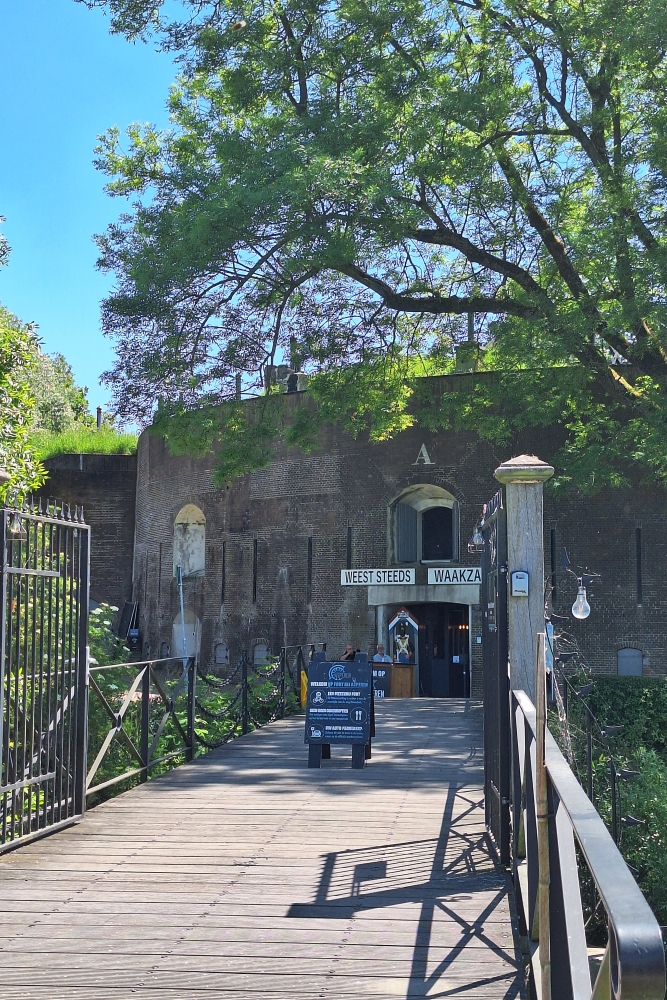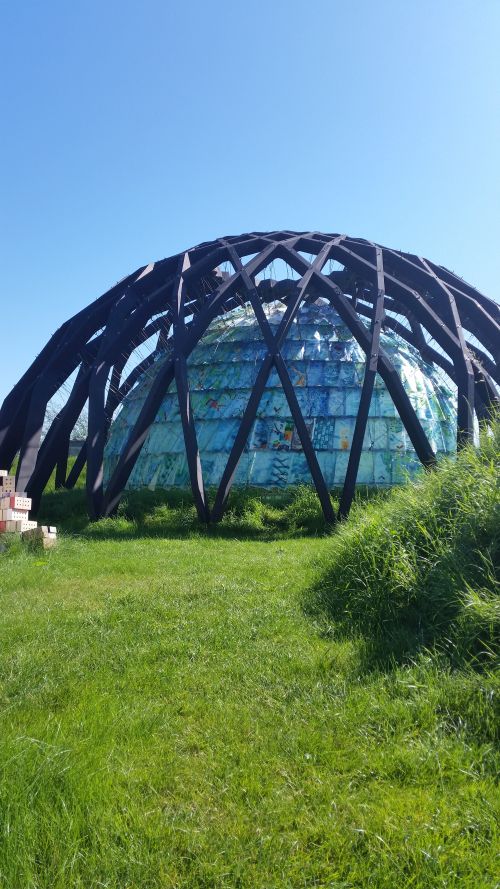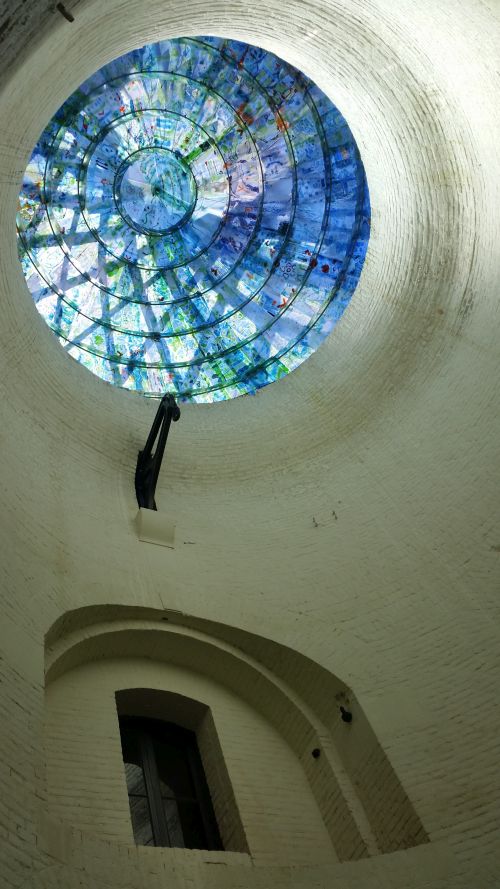Fort Asperen
Fort bij Asperen is a special and well-preserved part of the New Dutch Waterline, a Dutch defense system based on inundation (controlled flooding of land). The fort is located in the province of Gelderland, near the town of Asperen on the river Linge.
Brief history
Year of construction: The fort was built between 1845 and 1847.
Function: It served to defend the Lingedijk, the dike between Gorinchem and Leerdam. It was strategically located at a crossroads of roads and waterways.
Part of the Waterline: Fort bij Asperen was part of the New Dutch Waterline, a defense line that ran from Muiden to the Biesbosch.
Architecture and structure
Tower fort: It is a so-called tower fort — a round, brick defense structure with thick walls, intended to offer independent resistance. Ground plan: Circular with a courtyard, several vaulted rooms, casemates, a moat around it and a drawbridge.
Defence: The soldiers could shoot all around; the fort offered space for troops, weapons, ammunition and food supplies.
Adjustments: During the mobilisation period of 1939-1940, concrete bunkers and group shelters were also added (such as the Type P and a cast steel G casemate).
Fort in later times
Military function: The fort lost its military function after the Second World War.
Current use:
The fort has been open to the public since the 1990s.
It is used for art exhibitions, cultural events and educational programmes.
There is also a fort guard's house and the area is popular with walkers and cyclists.
Why is it special?
The Fort bij Asperen is one of the best preserved tower forts in the Netherlands.
It is a tangible and impressive example of Dutch water defence.
Combined with the nearby bunkers (such as the Type P and G casemates) it tells the complete story of defence through the ages.
Do you have more information about this location? Inform us!
Source
- Text: Fedor de Vries + RJArmy.nl
- Photos: Dick de Bruijne (1), RJArmy.nl (2, 3), Kevin Prenger (4, 5)
- LEEUWEN, M. VAN & STAARMAN, A., Tastbare Herinneringen 1914-1918, Western Front Association Nederland, 2008.
Nearby
Museum
Point of interest
- Trench Geofort - Herwijnen
- Fort Herwijnen - Herwijnen
- Information Sign Robert Milton Martin - Asperen
Monument
- Monument ‘Nova & Vetera’ Asperen - Asperen
- Logo Piron Brigade Leerdam - Leerdam
- War Memorial Leerdam - Leerdam
Cemetery
- Dutch War Grave Oosterwijk - Oosterwijk
- Dutch War Graves Heukelum - Heukelum
- Dutch War Graves General Cemetery Leerdam - Leerdam
Remembrance Stone
- Stumbling Stone Oranje Nassaulaan 16 - Leerdam
- Stumbling Stone Jeekelstraat 29 - Leerdam
- Stumbling Stones Voorstraat 93 - Beesd
Fortification
- Group Shelter Type P Fort Asperen - Asperen
- Stronged Guardhouse Fort Asperen - Asperen
- Group Shelter Type P Fort Asperen - Asperen
